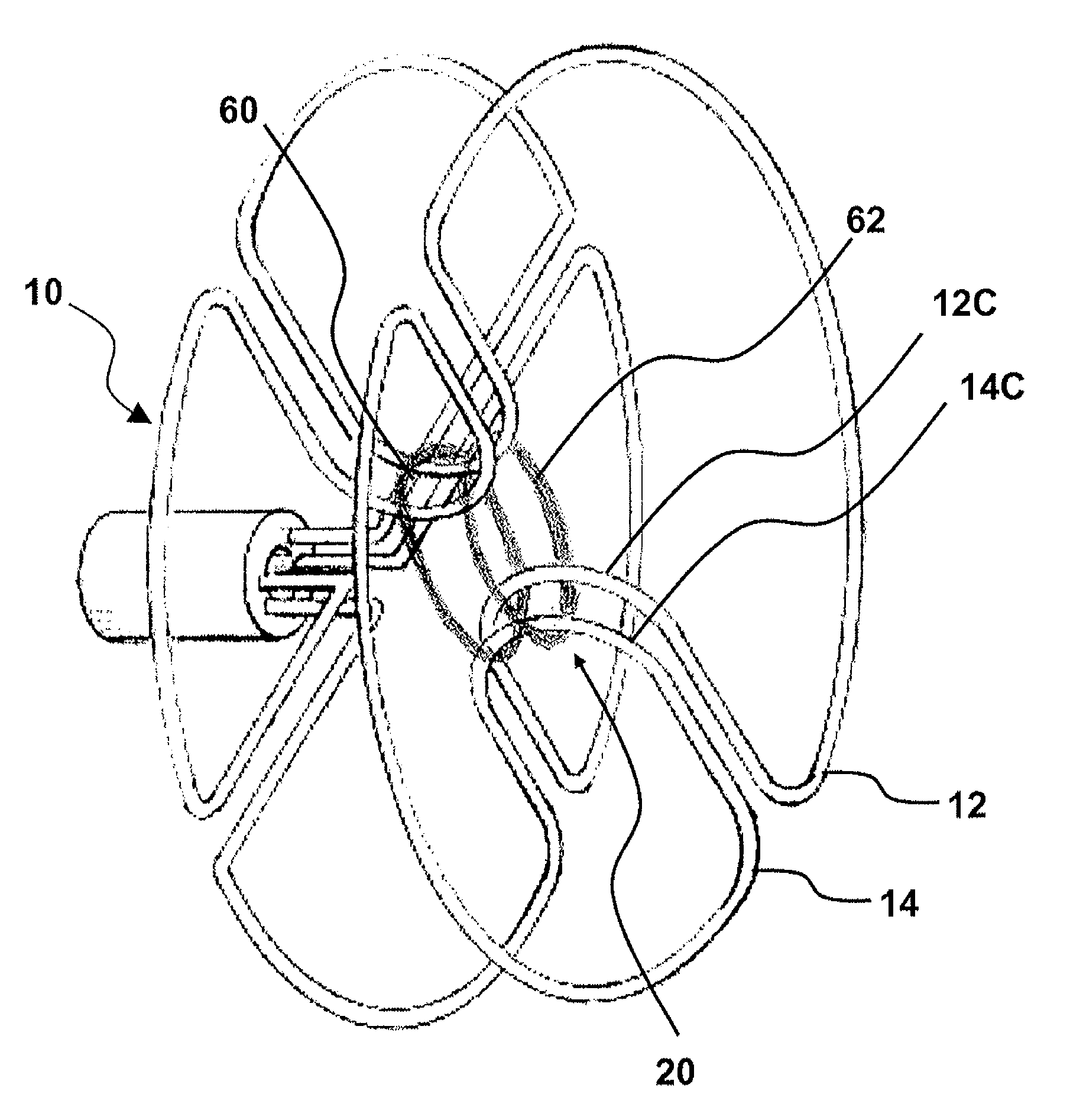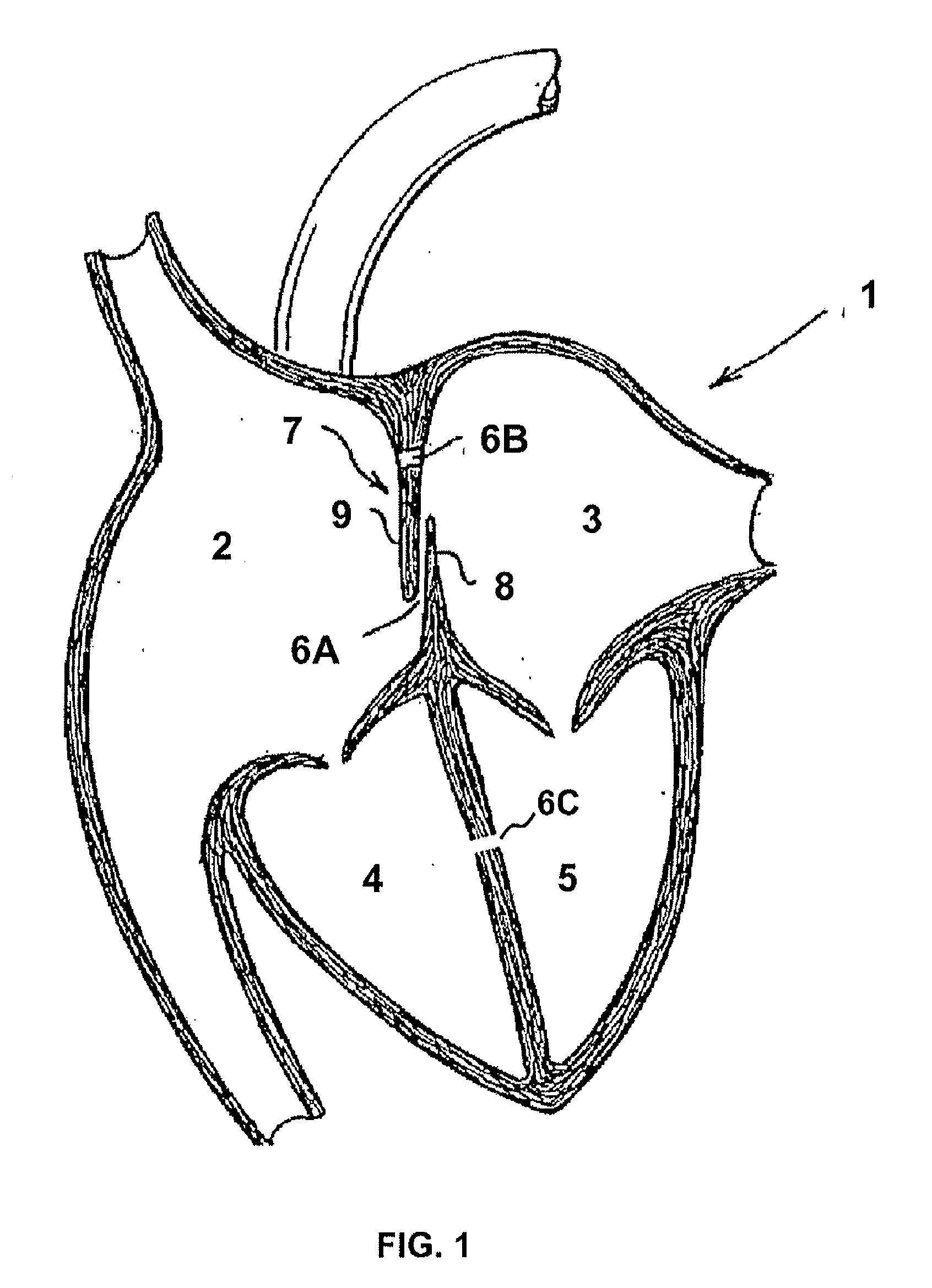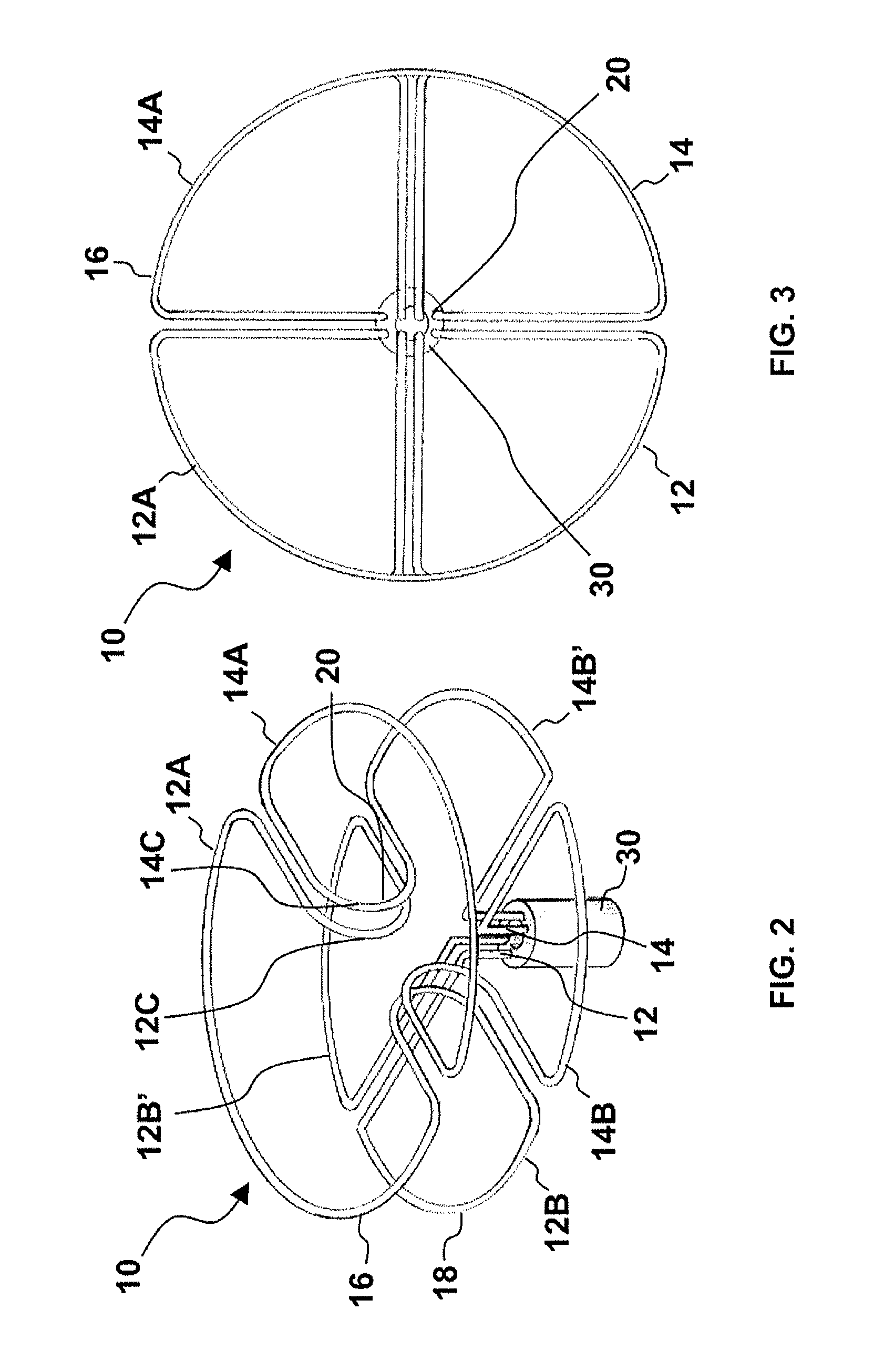Heart occlusion devices
- Summary
- Abstract
- Description
- Claims
- Application Information
AI Technical Summary
Benefits of technology
Problems solved by technology
Method used
Image
Examples
Embodiment Construction
[0056]The present invention provides a device for occluding an aperture within body tissue. One skilled in the art will recognize that the device and methods of the present invention may be used to treat other anatomical conditions in addition to those specifically discussed herein. As such, the invention should not be considered limited in applicability to any particular anatomical condition.
[0057]FIG. 1 illustrates a human heart 1, having a right atrium 2, a left atrium 3, a right ventricle 4, and a left ventricle 5. Shown are various anatomical anomalies 6A, 6B, and 6C. The atrial septum 7 includes septum primum 8 and septum secundum 9. The anatomy of the septum 7 varies widely within the population. In some people, the septum primum 8 extends to and overlaps with the septum secundum 9. The septum primum 8 may be quite thin. When a PFO is present, blood could travel through the passage 6A between septum primum 8 and septum secundum 9 (referred to as “the PFO tunnel”). Additionall...
PUM
 Login to View More
Login to View More Abstract
Description
Claims
Application Information
 Login to View More
Login to View More - R&D
- Intellectual Property
- Life Sciences
- Materials
- Tech Scout
- Unparalleled Data Quality
- Higher Quality Content
- 60% Fewer Hallucinations
Browse by: Latest US Patents, China's latest patents, Technical Efficacy Thesaurus, Application Domain, Technology Topic, Popular Technical Reports.
© 2025 PatSnap. All rights reserved.Legal|Privacy policy|Modern Slavery Act Transparency Statement|Sitemap|About US| Contact US: help@patsnap.com



